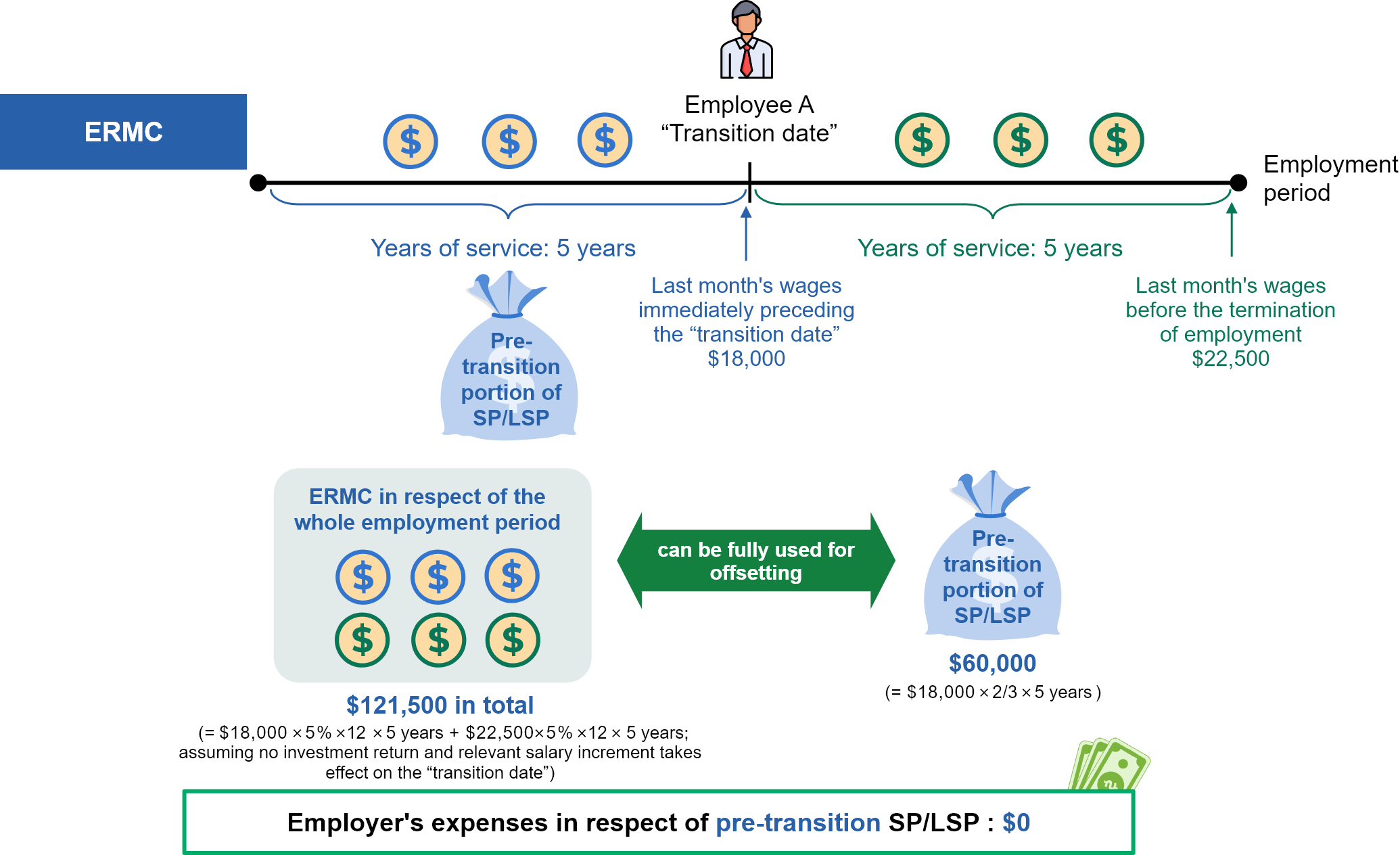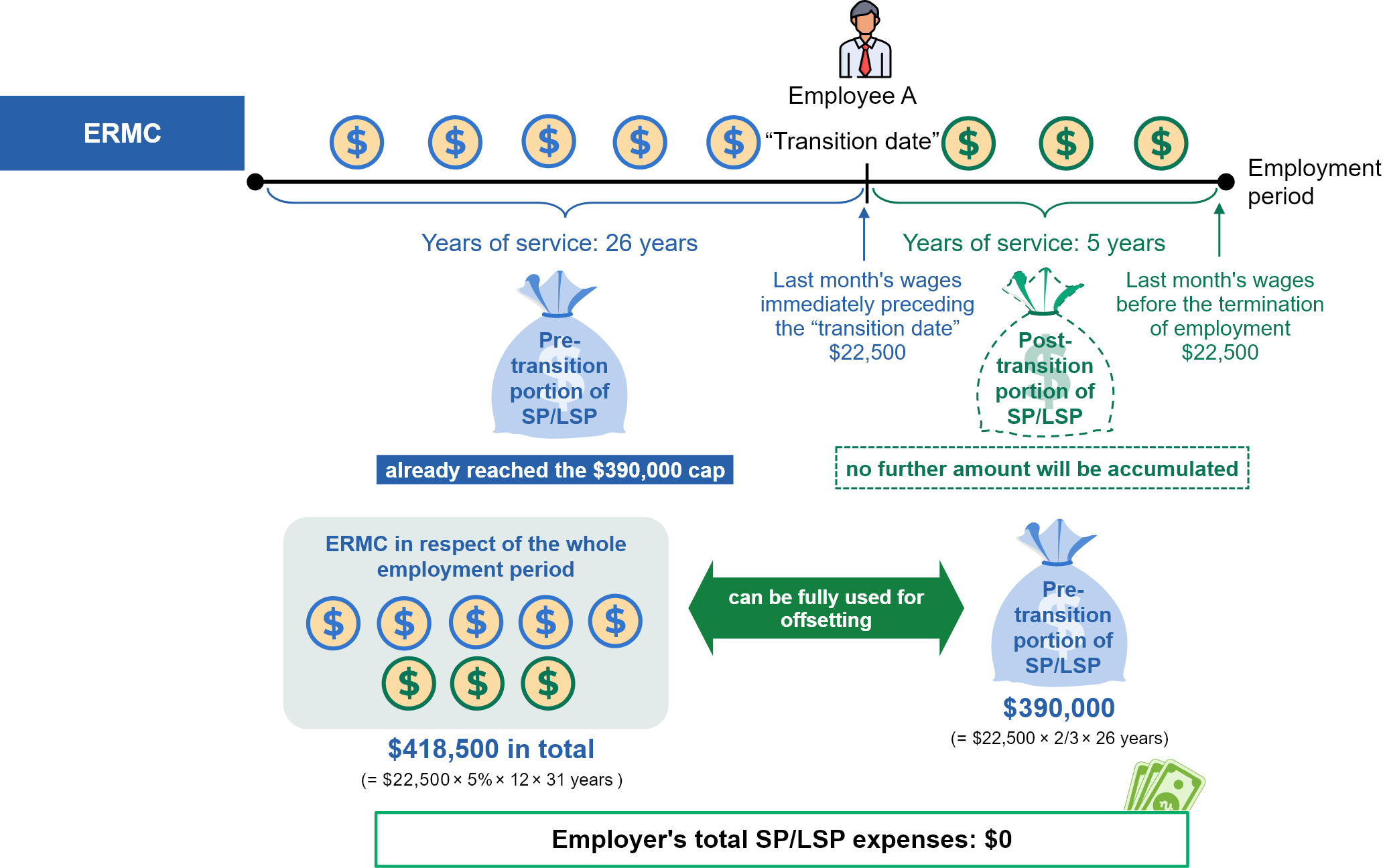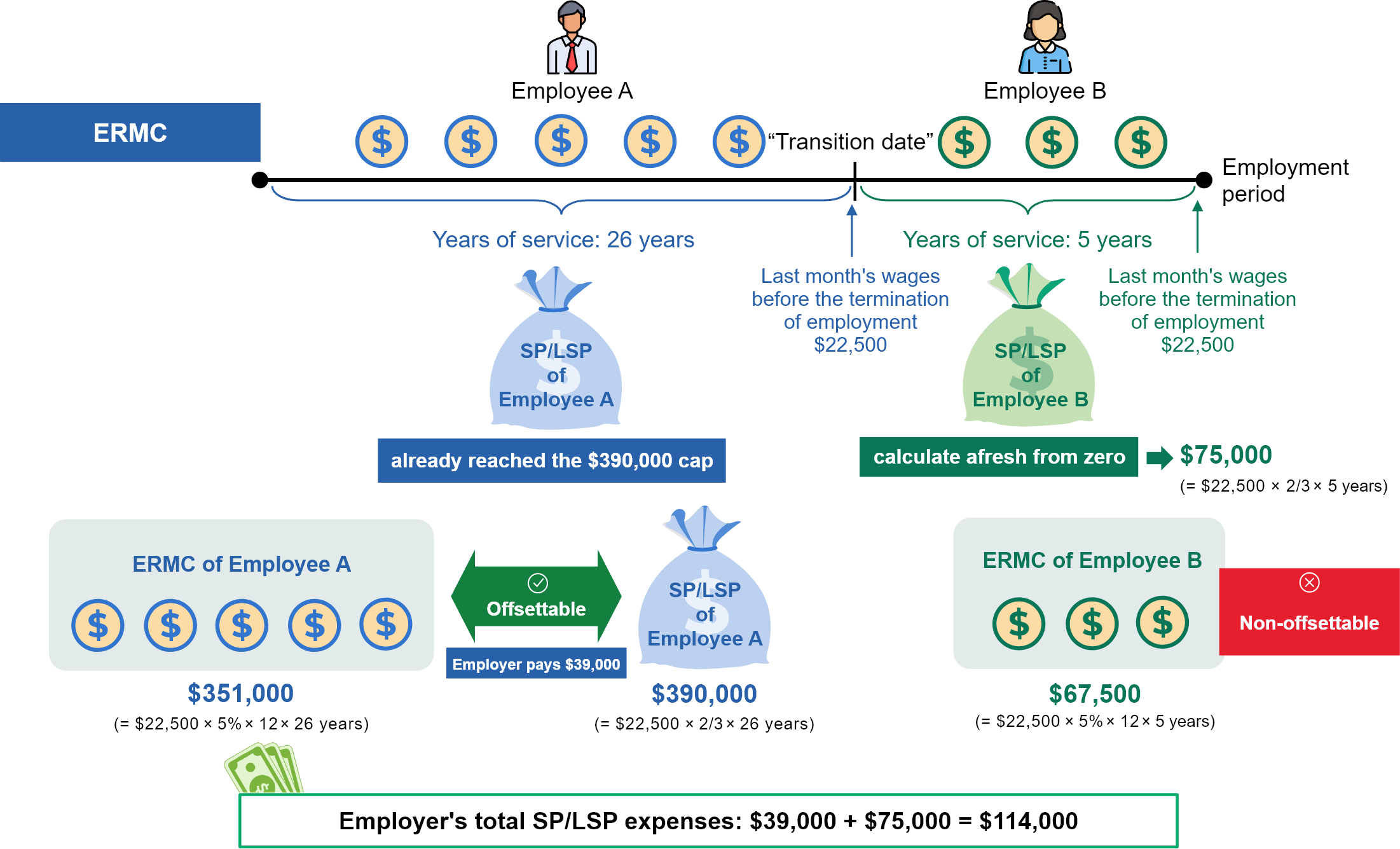-
Employers should not dismiss employees before the “transition date”. Employers does not save severance payment (SP) and long service payment (LSP) expenses by doing so because –
Employers may continue to use the accrued benefits derived from their MPF contributions (irrespective of mandatory or voluntary contributions) throughout the whole employment period of existing employees to offset the pre-transition portion of SP/LSP; and
The pre-transition portion of SP/LSP of existing employees is calculated on the basis of the wages and years of service as at the “transition date”. Therefore, the amount of pre-transition portion of SP/LSP will not increase regardless of any salary increase afterwards or the length of employment after the “transition date”.
-
Generally speaking, a higher amount of SP/LSP expenses will be incurred if employers dismiss employees before the “transition date” and employ new ones than the expenses of retaining existing employees because –
Employers may continue to use the accrued benefits derived from their MPF contributions (irrespective of mandatory or voluntary contributions) throughout the whole employment period of existing employees to offset the pre-transition portion of SP/LSP. Retaining existing employees allows the accrued benefits derived from employers’ MPF contributions to grow, which can be used to offset employees’ pre-transition portion of SP/LSP in future; and
The SP/LSP of new employees will build up afresh to a maximum of $390,000, and the whole amount cannot be offset by employers’ MPF mandatory contributions.
Scenario 1: Employer continues to employ an existing employee after the “transition date”
Assuming an employer employs Employee A for 5 years before the “transition date” and continues to employ Employee A for 5 years after the “transition date”. Assuming the last month’s wages of Employee A immediately preceding the “transition date” is $18,000 whilst the last month’s wages before the termination of employment is $22,500.
Scenario 2: Employer dismisses an existing employee before the “transition date” and employs a new employee after the transition
Assuming the employer dismisses Employee A who has 5 years of service before the “transition date” and employs a new Employee B for another 5 years. Assuming the last month’s wages of Employee B before the termination of employment is also $22,500.
The above example illustrates that if the employer dismisses an existing employee before the “transition date” and employs a new employee afterwards, an additional amount of $6,000 pre-transition SP/LSP is incurred. No matter the employer continues to employ Employee A or changes to employ Employee B, the amount of post-transition SP/LSP incurred are the same, which is $75,000 and cannot be offset by ERMC.
Scenario 1: Employer continues to employ an existing employee after the “transition date”
Assuming an employer employs Employee A for 26 years before the “transition date” and continues to employ Employee A for 5 years after the “transition date”. Assuming the last month’s wages of Employee A immediately preceding the “transition date” and before the termination of employment are both $22,500.
Scenario 2: Employer dismisses an existing employee before the “transition date” and employs a new employee after the transition
Assuming the employer dismisses Employee A who has 26 years of service before the “transition date” and employs a new Employee B for another 5 years. Assuming the last month’s wages of Employee B before the termination of employment is also $22,500.
The above example illustrates that if the employer dismisses an existing employee before the “transition date” and employs a new employee afterwards, an additional amount of $114,000 SP/LSP is incurred.





